Was 2015 the year of the foodie?

Almonds became the whipping boy of California’s drought in a year when consumers discovered the water footprint of their food.
They shamed almonds, looked askance at genetic modification and antibiotics, and demanded to know more about what they ate. Those actions by U.S. food consumers may have made 2015 the year of the foodie, whose opinions and choices drove companies and policymakers to change the way food is grown and sold.
“It’s been a very positive year in many ways,” said Andrew Kimbrell, executive director of the Center for Food Safety, a consumer advocacy group that pushed many of the issues of 2015. “The foodie movement has become a food safety movement, and it has become a very powerful movement both in policy and in the marketplace.”
Here’s a look at some of the top issues of 2015:
Superbugs and chicken:

Foster Farms announced Monday it will eliminate the use of antibiotics that are important to human medicine, in an effort to combat the rise of so-called superbugs that are resistant to treatment. The California-based poultry company recently introduced two antibiotic-free product lines, including “Simply Raised,” pictured here.
Foster Farms joined fellow poultry producer Perdue in moving away from antibiotics in its chidken. (File photo / Foster Farms)
The meat industry’s routine use of antibiotics that are part of the arsenal against human pathogens has been a perennial target of advocacy groups, who cite evidence that it contributes to the evolution of “superbugs” that can’t be killed by our most advanced pharmaceuticals.
Although over-prescription of antibiotics to humans shares more blame, consumers have been sending a message that it makes no sense to risk human health for cheaper meat. Food companies have seen the market trend and responded.
In June, Foster Farms joined fellow poultry producer Perdue in moving away from the routine use of antibiotics important to human medicine. They join fast-food companies such as McDonalds, Chick-Fil-A, Chipotle and Panera.
“We definitely feel like we are hitting a tipping point for antibiotic stewardship in the poultry industry," said Jonathan Kaplan, director of the food and agricultural program at the Natural Resources Defense Council. "This is more than a microtrend. This is a tsunami."
Scrambling the egg industry:
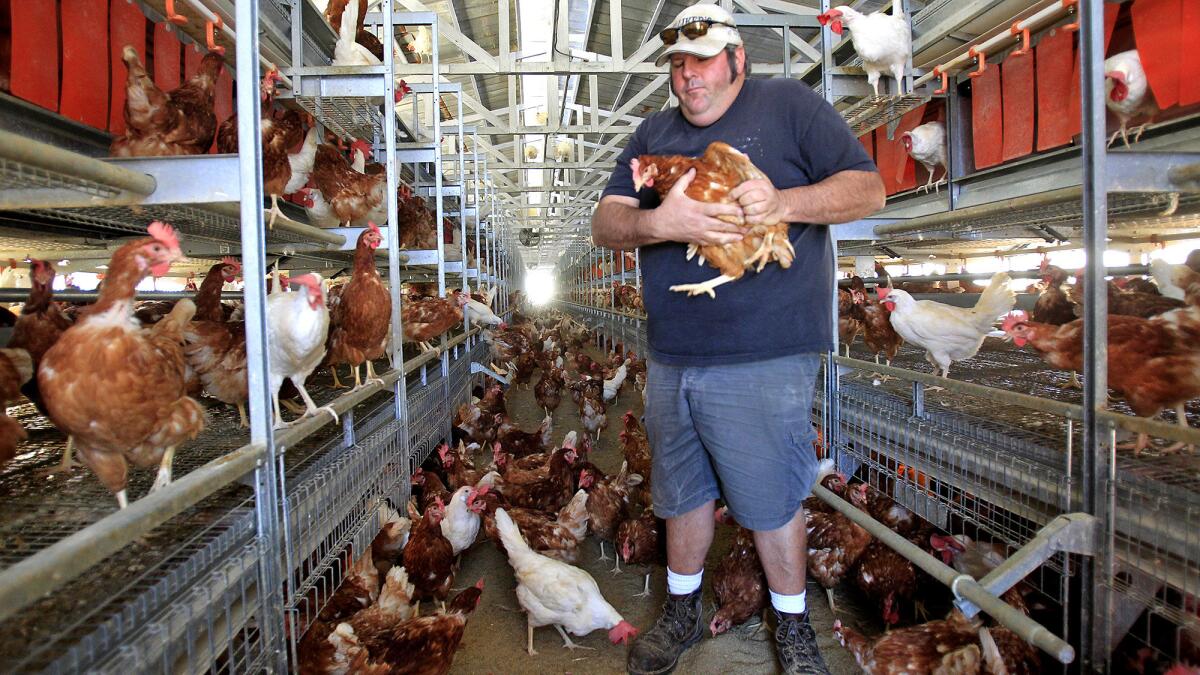
Hilliker manages his cage-free flock.
Frank Hilliker holds one of his 8,000 brown Leghorn and white Leghorn chickens in a cage-free aviary system barn at Hilliker's Ranch Fresh Eggs. (Allen J. Schaben / Los Angeles Times)
A similar tipping point hit the $9-billion egg industry. McDonalds announced in September that it will transition over the next decade to suppliers who provide their hens with more room, access to the ground, and other amenities. While that’s technically not “cage-free,” (and neither is California’s landmark Proposition 2, passed in 2008), the move amounts to the beginning of the end for “battery cage” chicken farms.
Glenn Hickman, an Arizona-based egg producer who indirectly supplies McDonald's, responded to the announcement with plans to build a modern, 2-million-hen facility. Hickman, like other West Coast producers, has been moving toward roomier enclosures since California passed Proposition 2.
Even the egg industry grudgingly agreed that McDonalds had pushed it past the tipping point. But Ken Klippen, president of the National Alliance of Egg Farmers, recently called the cage-free movement “the greatest case of fraud in 2015,” adding that it would send the price of eggs skyrocketing.
What actually sent egg prices skyrocketing last year was a massive avian flu outbreak that wiped out nearly 50 million chickens, turkeys and other domesticated fowl in the Midwest. Egg producers there are bracing for this flu season by tightening their sanitation and inspection methods.
GMO label ban sinks, salmon swims:
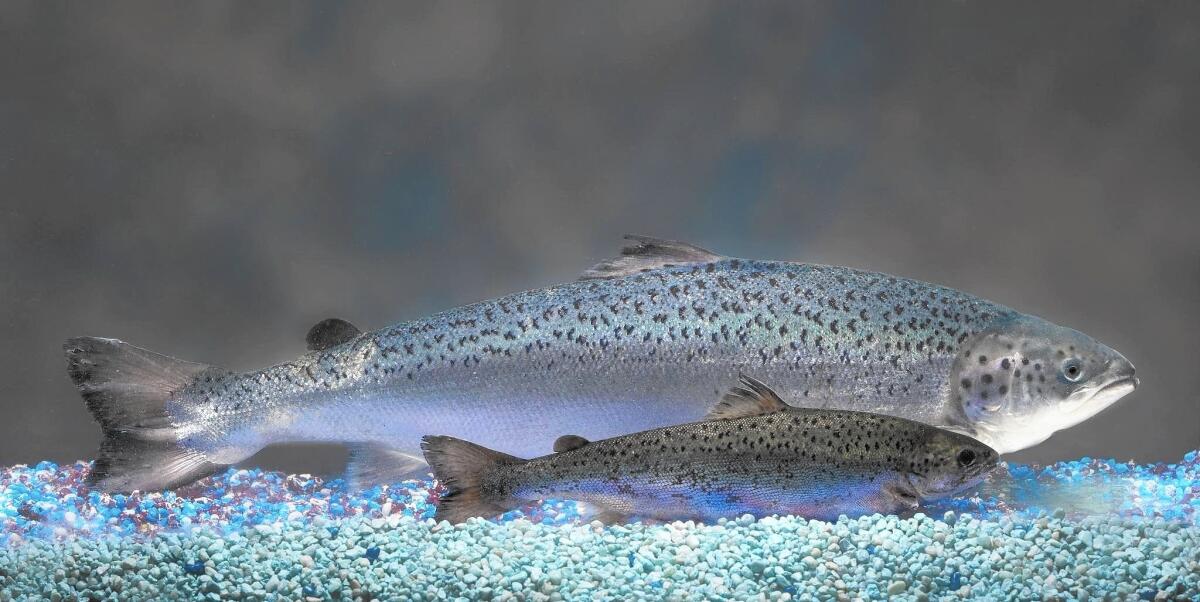
The FDA said GMO salmon was fine, but Congress says it should be labeled. (Los Angeles Times)
A New England state and an Oregon county scored victories in the fight over genetic modification of food ingredients. Vermont’s 2014 law requiring labeling of GMO food by July 2016 stood a court test, while an outright ban on cultivating crops that have been genetically modified passed a legal challenge in Jackson County, Oregon. Neither battle is completely over, though.
Meanwhile, an attempt to block more GMO labeling laws failed to make it through the congressional budgeting process. But a rider requiring labeling of genetically modified salmon swam right through in December, barely a month after the Food and Drug Administration decision that the altered fish was safe to eat.
Almond shaming:
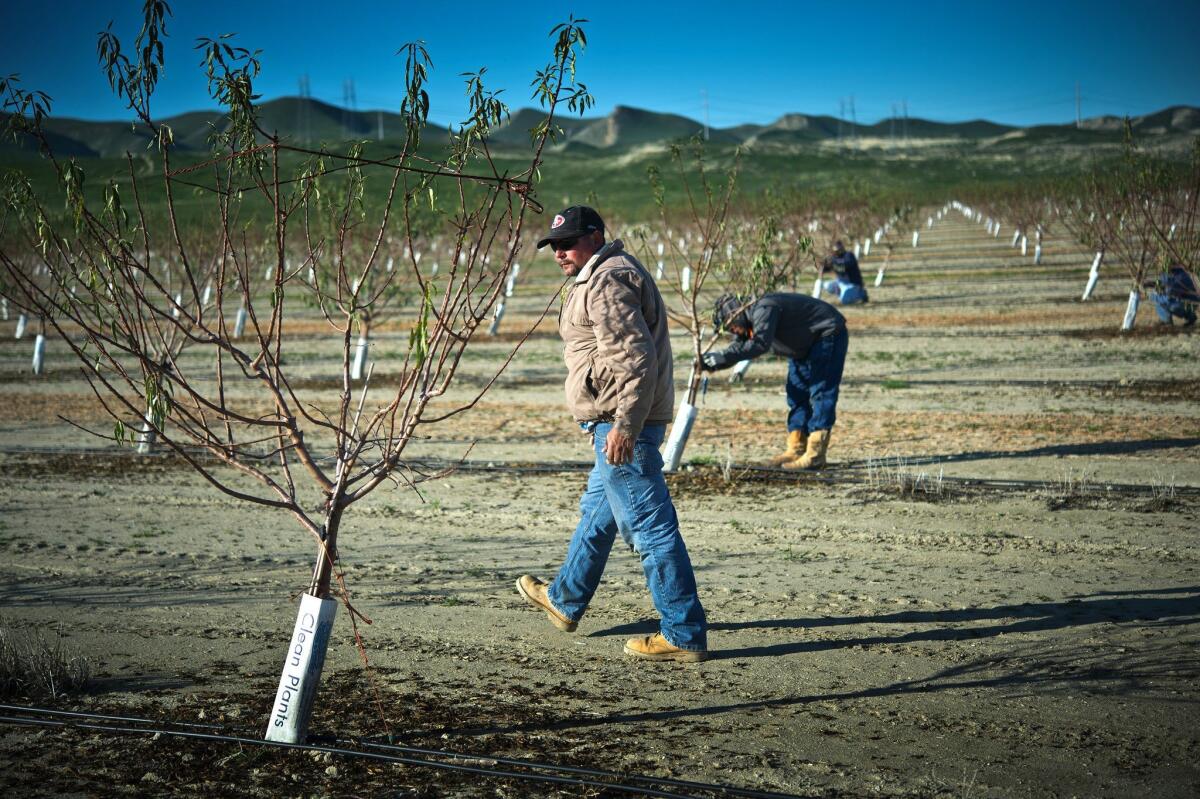
Jesus Fuentes Martinez, of Dos Palos, ties young almond trees as he works for farmer Joe del Bosque in January in Firebaugh, Calif.
Consumers learned it takes a gallon of water to make one almond, making the nut a poster child for the state's drought. (Hector Amezcua / TNS)
This was the year that consumers learned about the water footprint of food. Almonds became the whipping boy for California’s drought, largely after someone calculated that each nut took about a gallon of water to grow.
The Almond Board begged to differ and took to the offensive, paying to make its point on public radio and other outlets. Almond hulls are used in cattle feed, while shells are used in biomass energy plants, bringing the gallon-per-nut figure down, the board noted.
Regardless, Californians and consumers nationwide noticed that California’s $46-billion agriculture industry sops up 80% of the water that’s diverted from its natural courses. Agriculture doesn’t like using that trough, and prefers including water that keeps the state’s ecology healthy. By that measure, agriculture uses closer to 40%. Neither side is giving a very detailed accounting, water experts caution.
Carbon: It’s what’s for dinner:
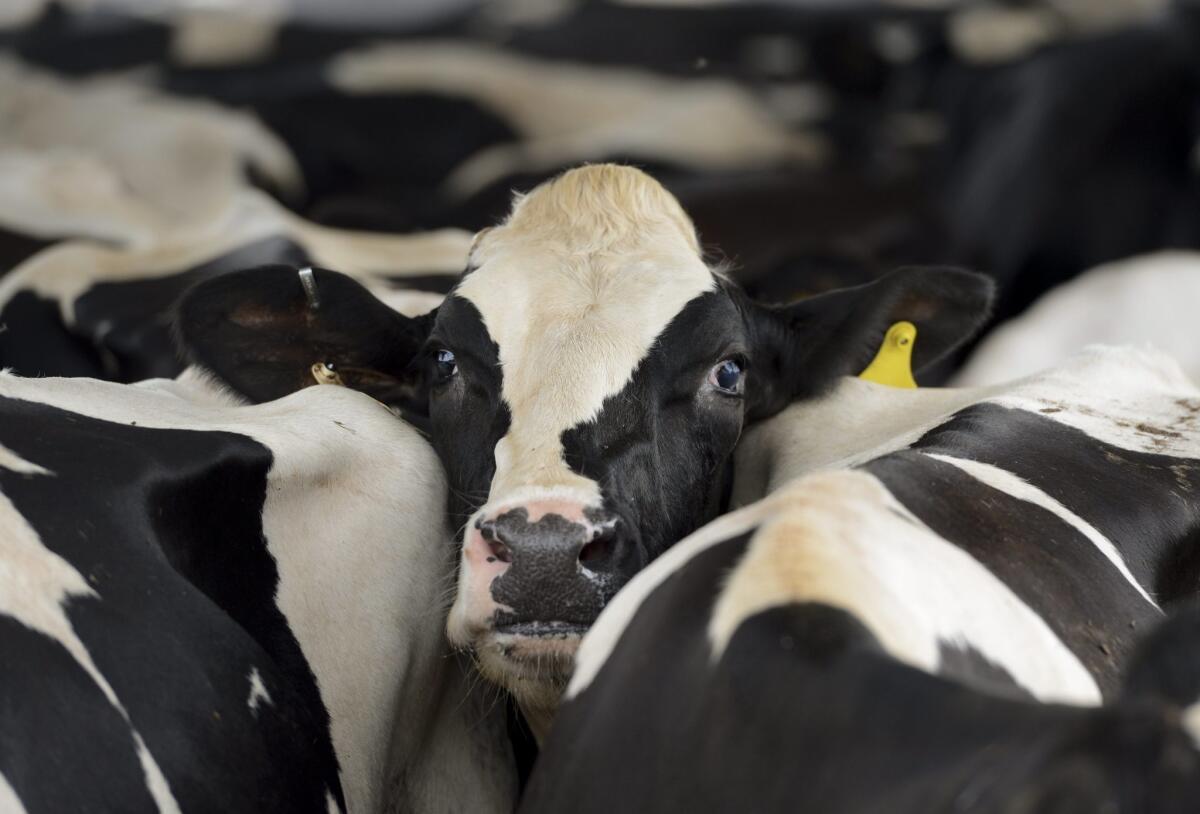
Through their manure and, yes, their flatulence, cattle are major producers of methane, a potent greenhouse gas. (Erik S. Lesser / EPA)
Climate conferences tend to be heavy on addressing how changes in weather patterns will affect food security. But agriculture’s contribution to greenhouse gases got more attention at this year’s COP21 conference in Paris, where delegates discussed ways to cut methane from cows and rice cultivation, carbon emissions from machinery, and even the nitrogen oxides emitted from soil microbes fed by nitrogen-based fertilizers.
“This is the breakthrough year in understanding the relationship between climate and food choices,” Kimbrell said.
Farm to table picks up a nasty hitchhiker:
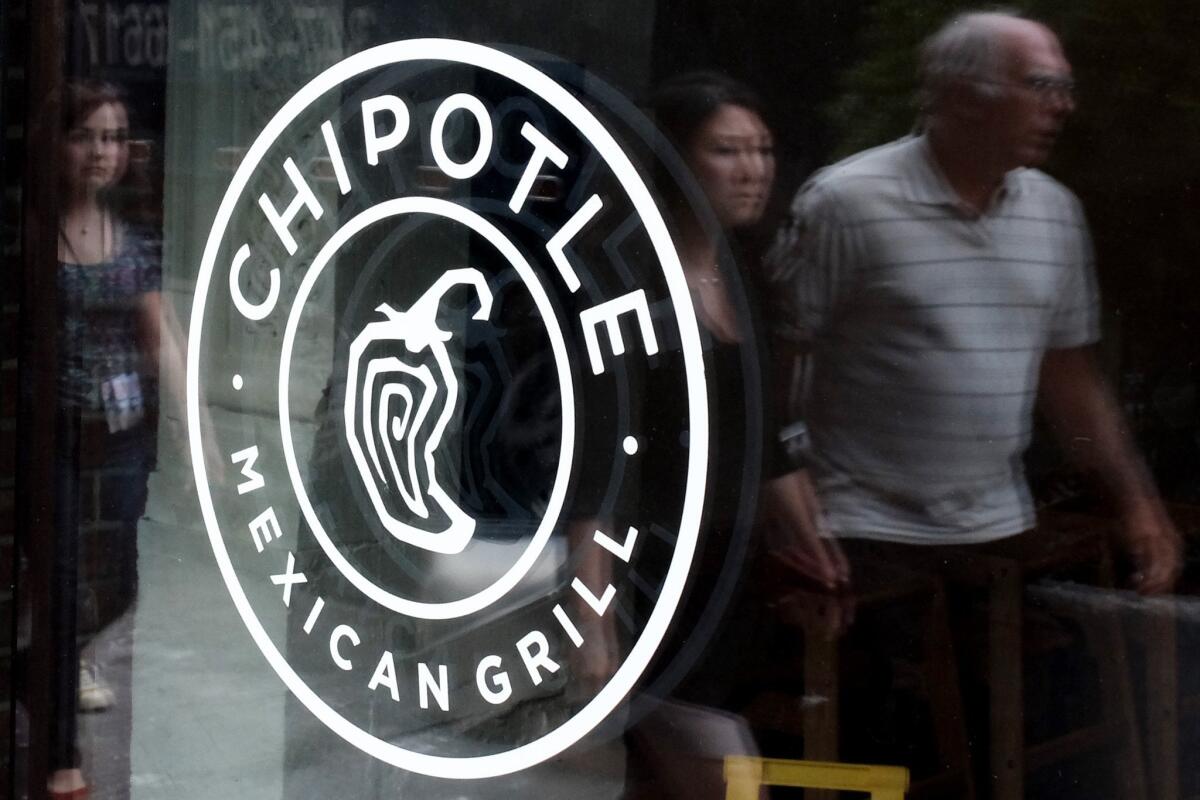
Shares of Chipotle Mexican Grill Inc. were down Monday morning after a cluster of <i>E. coli</i> cases led to the voluntary closure of restaurants in Washington and Oregon.
Chipotle restaurants were forced to close after illness outbreaks in 2015. (Kena Betancur / AFP/Getty Images)
Concerns over the environment have driven a movement toward locally sourced ingredients. But Chipotle restaurants, which prides itself on its locally sourced and prepared food, suffered a series of contamination incidents that sickened scores of people in multiple states.
The rash of illnesses bit into the stock of the company, which liked to poked fun at other chains’ ingredients. Chipotle now has been forced to shift toward more centralized food preparation. You don’t have to imagine all the jokes about eating crow – social media served up a vast buffet of it.
Follow me on Twitter: @LATgeoffmohanInside the business of entertainment
The Wide Shot brings you news, analysis and insights on everything from streaming wars to production — and what it all means for the future.
You may occasionally receive promotional content from the Los Angeles Times.








